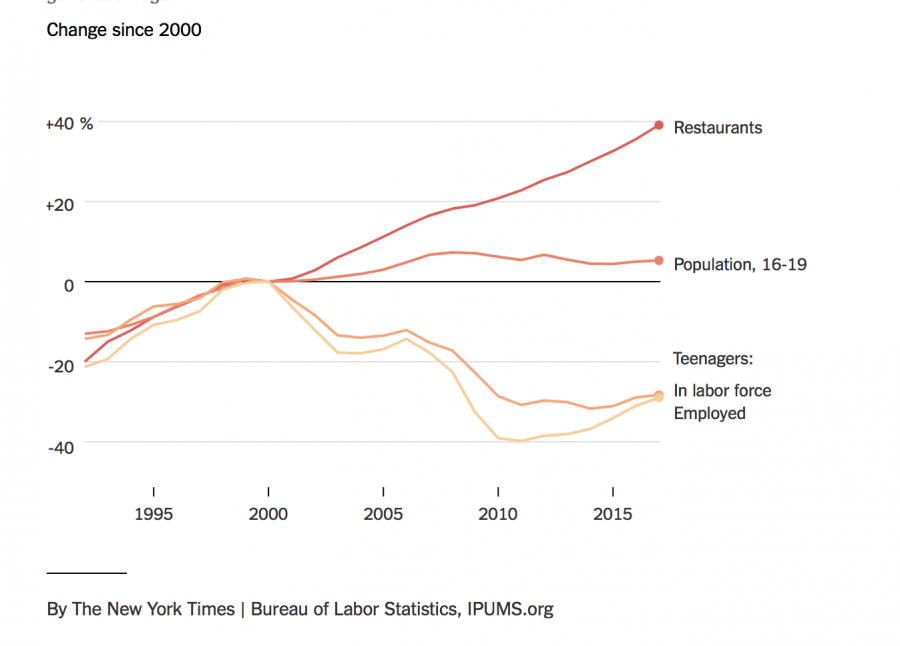Teenagers in the workforce decline
How teenagers make money without working in fast-food chains
Picture via The New York Times
Fast-food jobs are growing nearly twice as fast as employmenmt overall, and teenagers in labor are decreasing.
In 2000, 45 percent of Americans between ages 16 and 19 had a job. Today, however, only 30 percent do. This substantial decline in teen workers negatively impacts fast food chain owners who are constantly on the market to hire new employees. This problem is due to two factors: there are simply fewer teens in the workforce, and fast-food jobs are increasing twice as fast as employment overall.
Being surrounded by teenagers in high school, it’s clear that many students who are eligible to work claim they want a job, but they don’t put in the full effort to apply and get accepted. With technology making job applications so accessible and fast to complete, teens usually apply online and don’t follow through with their offers. Since there has been an increased emphasis on education and scholarships, teens are apparently dedicating more of their attention towards their school work during their years in high school.
As a teen with a part-time job in a restaurant, I know that it takes a certain level of commitment that is at times hard to sustain. According to the U.S. Department of Transportation, teens between 16 and 19 work for an average of 17 hours per school week. Along with this, they go to school for about 35 hours a week. This can take a toll on a teen’s sleeping habits and mood in general, which is one probable reason why there’s a decline in teenage workers.
With students constantly being pushed to challenge themselves in school with AP and honors classes and extracurricular activities, adding a part-time job into the picture isn’t manageable. Prioritizing one’s education over a part-time job is reasonable, especially if making money isn’t crucial in a student’s life.
Although the emphasis on education might explain the decline in teenage workers, the popularity of social media and technology is also something more teens are utilizing to make profits in new ways. For instance, sophomore Artashes Amirkhanyan started a jewelry company on Instagram called Nur Jewelry in January. “It’s easy to manage a business and school at the same time because I do everything online,” Amirkhanyan said. “I manage the Instagram account and sales through our website.” Using technology allows teenagers to focus on school work and make money straight from their own homes. Though this is beneficial for the teens, the fast-food chains are the ones that suffer.
Since fast-food companies aren’t finding enough employees, they are forced to offer more incentives for teens to work for them. For example, chains like Taco Bell and McDonald’s offer scholarships for teens that work for their stores. Doing this will lure more teens into the workforce, but with technology constantly advancing and being more popular among teens, companies need to think of better ways to gain employees.

Interest/hobbies: Playing with my dog, watching Youtube videos, awkwardly dancing
Favorite year in music: 2007
Goals in life: To have a corgi and a wiener...


















